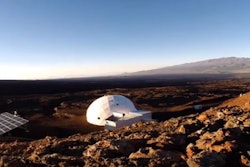Most manufacturers have a plethora of information about supplies and production flowing into reports and dashboards. Still, there are gaps in knowledge — some quite wide. Manufacturing facilities have countless moving parts, both on the production line and off.
Enter the Internet of Things. IoT means many things these days, from “smart” fridges to improved building automation. But to manufacturers, it can mean a whole lot of savings based on data they didn’t have in the past.
It starts with lighting control nodes that currently provide light status, light-level status, occupancy patterns, and energy consumption readings and will soon be able to offer RFID asset tracking, WiFi, Bluetooth and light color change.
These nodes can not only connect to cloud-based systems to let manufacturers amalgamate their information with data from other systems, they can also be connected to wireless low/no power sensors that measure temperature, humidity, CO2 and air pressure.
Inside the Plant
The potential for manufacturers to collect key data from various physical spaces within the plant is enormous. Here are some examples:
Alerts using light color change. Let’s say a machine or portion of the production line becomes hotter or colder than the recommended temperature for operation. A wireless sensor placed in the area triggers a light change. All nearby personnel instantly know those red lights mean something needs immediate attention. Light color change can also be used for emergencies, with green lights showing the fastest exit path.
Temperature control. An area that must be kept below a certain temperature has two entrance doors. Each time a door is opened, warm air triggers the cooling fan, but it’s difficult to know how many times per hour each door is opened and during what times of day. A wireless sensor on each door can provide this information and be combined with other building automation data to provide a comprehensive picture of heating and/or cooling in the area. Similarly, wireless sensors placed at ceiling level could trigger cooling fans on and off based on temperature so they only run as needed.
Precision measurement. A probe can be attached to any wireless sensor, sending temperature or humidity data from inside a piece of equipment, inside a duct, or even inside a container of liquid to an IoT platform where it can be flowed into a report or combined with other data. RFID sensors mean critical assets can be tracked minute by minute, regardless of where they are in the plant.
Vending machine data. Some manufacturers are using specialized vending machines to dispense safety equipment or parts frequently needed on the production line. A wireless sensor placed on the machine can communicate using the machines protocol to extract data about the time and quantity of dispensed items and deliver it to an IoT platform.
Beyond the Plant
Manufacturers that have traditionally struggled to track the performance of products once they leave the plant (industrial equipment, air conditioners, office equipment) can take advantage of wireless sensors in a completely different way. Wireless sensors placed on each product as it leaves the plant gives them the ability to understand optimal operating temperatures and failure triggers.
Information from the sensor can feed into other types of customer data to help manufacturers adjust service level agreements and warranties. Historical operating data can also be provided to technicians prior to arriving onsite for maintenance or repair.
The End Goal
There are two main advantages to this type of data collection. First, older systems and equipment that would be difficult or impossible to rewire for data gathering can be easily monitored with a wireless sensor. Second, sections of the plant (doors, windows, hard-to-reach areas) that were traditionally “dark” in terms of data can not only be monitored, but connected with other building automation data for deeper insights and increased savings.
Although there are a variety of IoT platforms, including Amazon Web Services, Google Cloud Platform, Hewlett Packard Enterprise, IBM Watson and Microsoft Azure, most accept a variety of messaging protocols and communication languages and so can easily connect to wireless sensor networks.
In addition, the tech industry seems to be standardizing on MQTT as the channel to deliver data from a sensor network to the cloud, further facilitating connectivity. Many wireless sensors are designed to communicate with BACnet, which is becoming the standard communication protocol for building automation.
That type of connectivity is essential to the end-goal for manufacturers. It’s certainly helpful to be able to monitor the temperature of a piece of equipment or a plant area, but the truly significant savings come from connecting lighting information with time/temperature data and other building automation data until usage patterns become clear.
Cory Vanderpool is Business Development Director at Magnum Energy.























